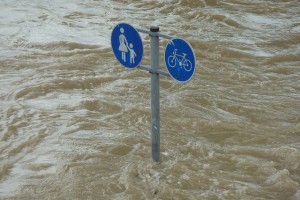Contaminated Drinking Water: Preparing for a Crisis
A recent water crisis in Toledo forced residents to seek alternative drinking water sources. For over 400,000 people, this past weekend was one without running tap water after a large quantity of toxins were found in the tap water. This weekend ban extended from northwest Ohio to southeast Michigan and is thought to have been caused by an algae bloom originating from Lake Erie. Over the weekend thousands of residents were forced to wait in long lines for water from stores or from the Ohio National Guard. The algae bloom is thought to have originated from years of farm runoff and sewage plant material entering the Great Lakes, causing toxins to eventually enter the drinking water supply. This brief water crisis illustrates the importance of emergency planning and preparation–particularly when it comes to survival essentials like water.
Emergency Water Access
A large scale water crisis like a vast contamination of a municipal water supply is a serious problem for everyone. In situations like these, the importance of emergency water access is crucial to health and well-being while the crisis is resolved. Having a personal water ration is extremely beneficial in these circumstances, but should be considered essential planning regardless of the status of the municipal supply. While an emergency water supply is not likely to be sufficient to meet all of your water needs for an extended amount of time, water rations should be large enough to meet your drinking water needs for two to five days. You can expect in a water crisis that local supplies at stores may be low and you will face long lines, so plan ahead and stock up before a crisis.
Unconventional Disaster Preparation
A large scale water crisis brought on by industrial contamination or other man made crisis are disasters that fall outside of the typical natural disaster that characterizes a lot of disaster preparation efforts. Planning and preparing for a public services crisis like compromised water is one of the most important varieties of disaster for which to undertake preparation. As the recent water crisis in Ohio and parts of Michigan demonstrated, the ease with which many thousands to millions of people can be affected by a loss of water or other essential municipal service is startling. Beyond natural disasters, compromised systems and human caused accidents can account for serious problems in large urban areas. Preparing for these situations is very important and can be the difference in weathering the crisis for better or worse.


